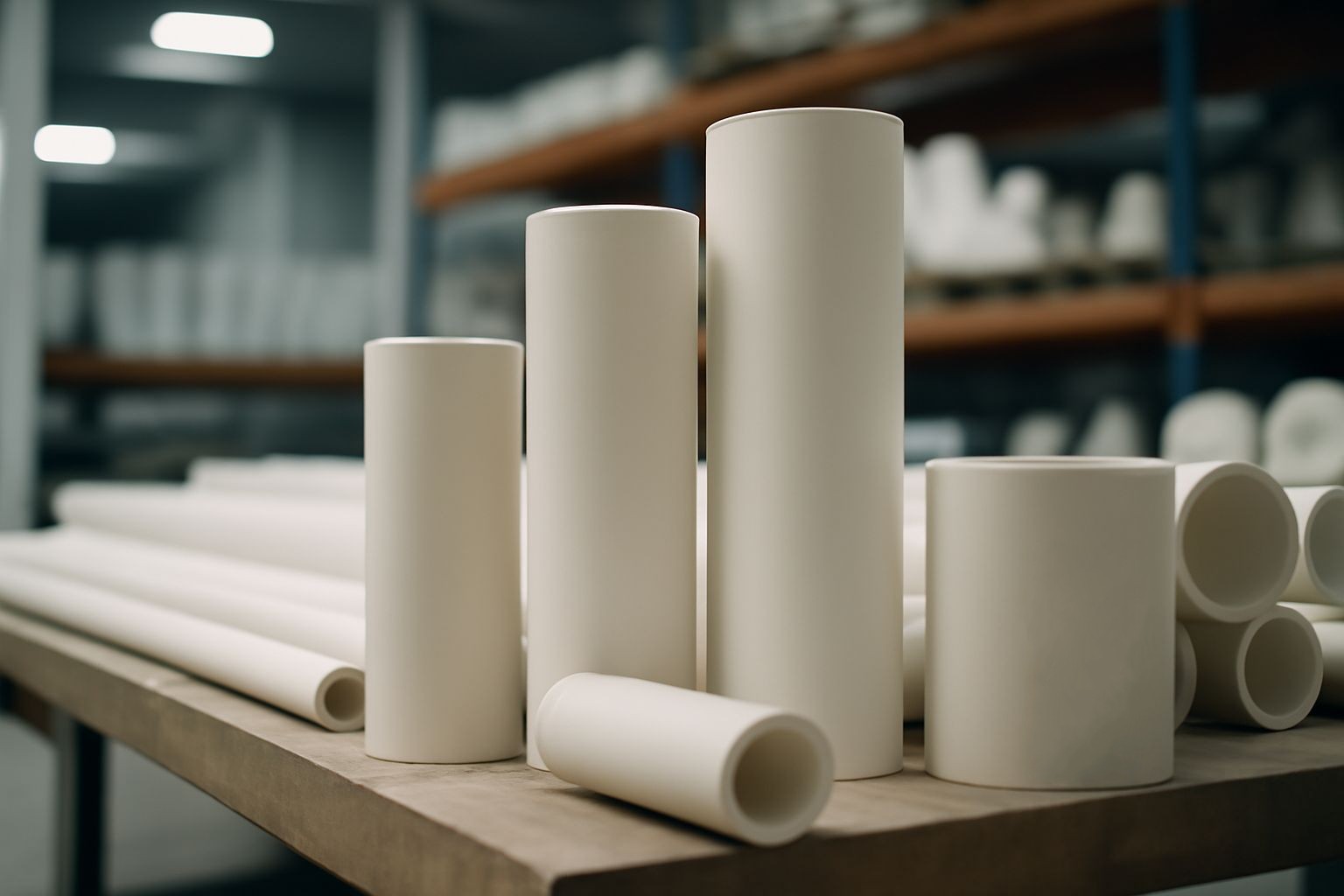Para los compradores industriales, verificar la pureza de la alúmina, las tolerancias de producción precisas y el stock de los proveedores son cruciales para evitar demoras costosas en el proyecto y garantizar un rendimiento confiable de los tubos.

¿Cómo verificar la pureza y las tolerancias de los tubos cerámicos de alúmina?
El primer paso al buscar proveedores tubos cerámicos de alúmina A nivel internacional es Requieren documentación detallada tanto de la pureza química como de las tolerancias dimensionales Según mi experiencia, los proveedores con buena reputación proporcionan análisis de terceros con datos claros (por ejemplo, ≥99,7 % de Al) 2 Oh 3 verificado por ICP-OES) e informes de dimensiones que coincidan con sus dibujos técnicos (con tolerancias de hasta ±0,02 mm). Es fundamental solicitar un informe real. alúmina certificado de pureza y para cotejar los informes de tamaño con las métricas de caso de uso requeridas para eliminar riesgos de ajuste.
Empresas líderes, como Kyocera o Morgan Advanced Materials, cumplen estrictas normas internacionales (como ASTM C799 o ISO 6474). Para cualquier proyecto B2B de alto valor, recomiendo confirmar por escrito que su posible proveedor cumple o hace referencia a estas normas antes de realizar pedidos.
| Método de verificación | Documento requerido | Referencia de la industria |
|---|---|---|
| Prueba de pureza química | Informe de pureza de terceros/ICP-OES | ASTM C799 |
| Tolerancia dimensional | Certificado de inspección/informe de calibre | ISO 6474 |
¿Cuáles son las mejores prácticas para solicitar tubos de cerámica de alúmina de tamaño personalizado?
Realice pedidos personalizados de tubos de cerámica de alúmina por Presentar dibujos técnicos completos y especificar los parámetros críticos: diámetro, longitud, espesor de pared y nivel de tolerancia. Recomiendo solicitar prototipos de muestra antes de la producción en masa; esto le permite validar la calidad real del producto y su idoneidad para la aplicación.
Comunique con antelación los requisitos de acabado superficial y la redondez/rugosidad superficial admisible (p. ej., Ra ≤ 0,8 μm). Esto elimina malentendidos y errores de producción. Los principales fabricantes de equipos originales (OEM) europeos, como los de Alemania e Italia, siempre proporcionan estándares de referencia y esperan la aprobación previa de la primera muestra del artículo. Para pedidos repetidos, confirme si se utilizan moldes/herramientas y solicite las referencias de identificación de los moldes.
| Paso | Acción del comprador | Responsabilidad del proveedor |
|---|---|---|
| 1. Presentación del dibujo | Envíe dibujos técnicos 2D/3D con todas las dimensiones | Confirmar la fabricabilidad y las tolerancias |
| 2. Confirmación de la especificación | Aprobar la hoja de cotización/especificaciones detallada | Emitir documento firmado para la aprobación del comprador |
| 3. Producción de muestras | Probar y aprobar el primer artículo/muestra | Proporcionar muestra con el informe de inspección |
¿Cómo se puede garantizar una entrega rápida y una disponibilidad de stock adecuada?
Plazos de entrega fiables Depende del inventario real y de la capacidad de producción de su proveedor Solicite siempre listas de existencias actualizadas con fotos e identificación de lote. Pregunte con qué rapidez se envían los tamaños estándar. Envío en 24 horas para artículos en stock es típico de los proveedores chinos de calidad) y aclarar el tiempo de entrega de las piezas personalizadas, normalmente de 3 a 6 semanas, dependiendo de la complejidad.
Los compradores industriales de EE. UU. y Alemania se han beneficiado de la colaboración con proveedores que ofrecen un seguimiento transparente de la cadena de suministro y opciones de stock de reserva. En CSCERAMIC, mantenemos registros de inventario detallados y en tiempo real, y comunicamos honestamente qué está listo para envío rápido y qué se fabricará bajo pedido. Este enfoque reduce directamente el riesgo de retrasos en los proyectos.
| Tipo de artículo | Plazo de entrega típico | Mejores prácticas |
|---|---|---|
| Tubo estándar (de serie) | 1–3 días (listo para enviar) | Solicitar foto de inventario + ID de lote |
| Tubo personalizado | 3–6 semanas (producción) | Confirmar el cronograma de producción exacto |
| Pedidos al por mayor/repetidos | 2 a 4 semanas (después de la aprobación de la muestra) | Analizar las existencias de reserva y las previsiones móviles |
¿Qué documentación y certificaciones deben proporcionar los proveedores?
Siempre se requiere formalidad registros de inspección, certificados de pureza y documentos de envío Al adquirir tubos cerámicos de alúmina en el extranjero, los proveedores confiables entregan certificados de análisis (COA), hojas de inspección dimensional y una lista de empaque detallada. Para cumplir con las normas de la industria, algunos compradores también solicitan... ISO 9001 Certificado que coincide con la fábrica y el lote del producto.
Para evitar futuras disputas o problemas aduaneros, también recomiendo solicitar una declaración de conformidad del fabricante y detalles de los métodos de prueba utilizados para cada lote. Esto mejora la garantía de calidad y el éxito del despacho de aduanas, especialmente para compradores B2B en la UE y Norteamérica.
| Tipo de documento | Objetivo | Cuándo solicitar |
|---|---|---|
| Certificado de análisis (COA) | Validación química/de pureza | Antes del envío |
| Informe de inspección | Conformidad dimensional | Con cada lote |
| Certificado ISO 9001 | Aseguramiento del sistema de calidad | Una vez por cada nuevo proveedor |
En resumen, el abastecimiento internacional de tubos cerámicos de alúmina requiere una rigurosa verificación de la pureza, las tolerancias y la documentación del proveedor. La colaboración fiable y la claridad en los pedidos minimizan el riesgo para los equipos de ingeniería B2B.




 info@csceramic.com
info@csceramic.com







 +86 18273288522
+86 18273288522